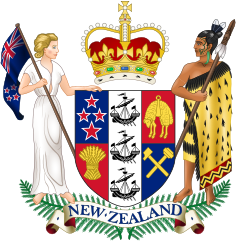| Local Government Act 1974 | |
|---|---|
 | |
| New Zealand Parliament | |
| |
| Royal assent | 8 November 1974 |
| Commenced | 1 December 1974 |
| Administered by | Department of Internal Affairs |
| Legislative history | |
| Introduced by | Henry May |
| Passed | 1974 |
| Amended by | |
| 1989 | |
| Related legislation | |
| Local Government (New Zealand) Act of 2002 | |
| Status: Current legislation | |
The Local Government Act 1974 of New Zealand consolidated the law relating to local government in New Zealand.
Contents
The Act made provision for the establishment of:
- unitary authorities
- regional councils (which were not established until the 1989 local government reforms) [1]
- district councils
- district community councils
- community councils
- local authority trading enterprises
The Act consolidated and amended the Municipal Corporations Act 1954, the Counties Act 1956, the Local Authorities (Petroleum Tax) Act 1970, and provisions of other Acts of the Parliament of New Zealand relating to the powers and functions of regional councils, united councils, and territorial local authorities.
The legislation is the legal basis for the governances of the cities, districts and regions of New Zealand.
Although most of the Act was repealed when the Local Government Act 2002 was enacted, some sections, providing for the management of roads, transport, navigation, drainage, rivers and waste management, still apply. [2]